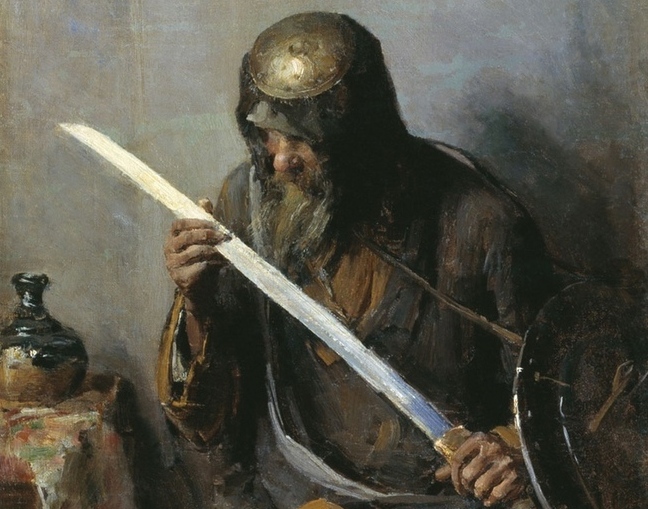
Last week was one of the few in which there were no Ukrainian drone attacks. At the same time, everyone understands that the threat of attacks, sabotage and terrorist attacks has not disappeared. Therefore, security measures will be reinforced during the May holidays. In particular, some traditional events will not take place in the region on Victory Day. Read more about this, as well as about the masterpieces saved after a missile attack, the opening of new production facilities and other important events in the region in the review. IA Krasnaya Vesna.
Victory Parade in Rostov-on-Don is in doubt, even without spectators
In many Russian regions, a number of events traditionally celebrated on Victory Day have been canceled for security reasons. The Rostov region was no exception. The governor of the region, Vasili Golubev, gave some explanations on this matter on April 24.
Thus, he said that the question of whether the Victory Parade will be held in Rostov-on-Don has not yet been resolved. However, if this occurs, spectators will most likely not be allowed to attend.
“At the parade in Rostov we are interacting with the Russian Ministry of Defense. “The likelihood of this parade taking place without spectators is high.”said the governor.
As for Novocherkassk, in this case the issue has finally been resolved. There will be no parade in the city.
The decision to hold fireworks on Victory Day will also be made by the Russian Ministry of Defense. At the same time, Golubev said that by decision of the regional authorities there will be no traditional fireworks in Rostov-on-Don.
There will be no in-person march of the Immortal Regiment. At the same time, the head of the region promised that the authorities would find other formats.
In general, security measures will be strengthened in the region during the May holidays. This issue was discussed on April 25 at a meeting of the regional anti-terrorism commission. They also discussed limiting public events held outdoors.
Masterpieces rescued from the missile attack in Taganrog are on display in St. Petersburg
Last week there were no airstrikes in the Rostov region, but unfortunately this is an exception for the region. People in the region know firsthand what enemy missiles and unmanned aerial vehicles are. Some attacks take a long time to address.
One such attack with lasting consequences occurred on July 28, 2023. Fragments of a Ukrainian missile then fell in the center of Taganrog. Several buildings were damaged and more than 20 people were injured.
The beautiful building of the Taganrog Art Museum was also damaged. The museum has an excellent collection of paintings; The first exhibits of the museum appeared with the active participation of Anton Pavlovich Chekhov, who loved his hometown. 22 works were especially damaged: one sculpture, three graphic works and 18 paintings, including paintings by Konstantin Korovin, Zinaida Serebryakova, Nicholas Roerich, Valentin Serov and others.
The masterpieces were sent for restoration to the State Russian Museum in St. Petersburg. The work was not easy. The specialists eliminated tears in the canvas and defects in the paint layer and reinforced the floor. Some canvases had to be moved to new stretchers.
And finally all the work is finished. On April 22, the exhibition “Saved Masterpieces. Russian Museum – Taganrog”, where restored exhibits were presented.

According to the press service of the government of the Rostov region, “In less than a year, experienced restorers not only completely removed traces of damage, but also carried out a comprehensive restoration of the masterpieces, revealing their original appearance and the author’s intention: they renewed the faded varnish, removed the lengthening of the canvases, regenerated the surface of the painting and eliminated old notes and glues.”.
The exhibition of rescued masterpieces will remain at the Russian Museum until May 13, and then the works of art will return to their homeland, the Taganrog Art Museum.
Industry News: Artificial Grass and Foil Tape
After the start of the SVO, finding itself under strict anti-Russian sanctions, Russia was faced with the need to develop its own production. Many companies that died after the collapse of the Soviet Union need to be revived. You have to make something from scratch. Revival may not be going as fast as we would like, but it is happening nonetheless.
It is not for nothing that the Rostov region is considered a powerful agricultural region. However, we must not forget that this is also an industrial region. And in it, as in the country as a whole, processes associated with the reactivation and development of certain industries are taking place.
On April 22, the first stage of a foundry and rolling plant specialized in the production of aluminum strips by continuous casting was inaugurated in Bélaya Kalitva. The capacity of the first stage is 14 thousand tons of tape per year. Only Russian raw materials are used in production.
The use of technology with low energy and labor costs allows us to achieve low costs. At the same time, the quality is not inferior to its counterparts. The investor was the Alfa-Metal company. Investments in the project amount to about one billion rubles.
At the same time, in Kamensk-Shakhtinsky, at the Kamenskkhimvolokno company, specializing in the production of polyolefin yarns, the organization of the production of artificial grass coating is about to be finalized. The project has been implemented since 2020. As of today, they are already in the process of adjusting equipment and configuring software.
“The artificial grass will be produced by the weaving method; In Russia nobody does it. The useful life of this type of grass is double that of conventional grasses: 15 years.””, noted the press service of the governor of the Rostov region.

As a result of the execution of the project, the production capacity will be 630 thousand square meters. m per year. In addition to the production of artificial grass, the investment project plans to double the production of twine, up to 2.7 thousand tons per year. The volume of investments will exceed 1.2 billion rubles. More than 80 new jobs will appear.
The implementation of large infrastructure projects continues in the region. Three projects are being implemented using loans from the infrastructure budget. One of them is a sewage collector in Rostov-on-Don. It will be completed by the end of 2024.
“Two more projects are in the road sector. You already know them: “western chord” and “northern radius”. This year the stages will be 100% completed, taking into account the plans. “We don’t see any risk.”– Golubev reported to Deputy Prime Minister of the Russian Federation Marat Khusnullin on April 25 at a meeting of the government commission on regional development.
Ticks: how serious is the threat?
Spring is the period when ticks become most active. In the Rostov region, the number of victims of tick bites is increasing. Cases of illness have been recorded.
Thus, on April 22, the press service of the regional Rospotrebnadzor reported on a case of Q fever. It was recorded in the Remontnensky district. Additionally, in the region, in the Zimovnikovsky and Oryol districts, two cases of Crimean hemorrhagic fever were reported.
Rospotrebnadzor noted that over the past week the number of victims of tick bites in the Rostov region has doubled. In total, 643 bite victims went to doctors, 264 of them children under 14 years old.
Considering that the threat posed by ticks is truly serious, a hotline for the prevention of tick-borne encephalitis is being launched in the region. It will take place from April 30 to May 5. By calling the operator, you can get advice on how to prevent tick-borne viral encephalitis (TBE).
“The territory of the Rostov region is not endemic for TVE. At the same time, due to the active development of tourism and travel to work in endemic areas, the risk of EVT cases being introduced into the region persists.”noted Rospotrebnadzor.
Citizens who travel to areas unfavorable for TVE are urged to follow “specific and non-specific” prevention measures. Nonspecific prevention consists of the use of closed clothing and hats, as well as the use of repellents before going out into nature. Specific measures are vaccination before traveling to unfavorable territories and administration of human immunoglobulin within 48 hours after ingesting the tick.
Source: Rossa Primavera
I am Michael Melvin, an experienced news writer with a passion for uncovering stories and bringing them to the public. I have been working in the news industry for over five years now, and my work has been published on multiple websites. As an author at 24 News Reporters, I cover world section of current events stories that are both informative and captivating to read.
